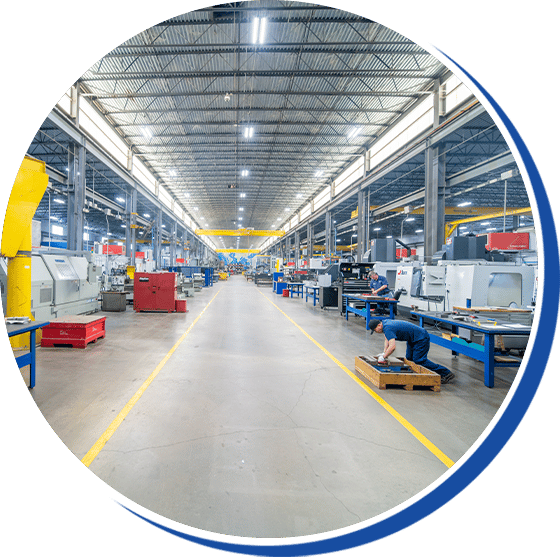
Gas turbines are an integral part of many industries such as power generation, oil and gas, and aviation. They provide a reliable and efficient source of power, but like any complex machinery, they require regular maintenance and repair to ensure optimal performance and prevent costly breakdowns. Predictive maintenance has emerged as a valuable tool in the maintenance and repair of gas turbines. Reach out here to get a proactive approach to identifying potential issues and addressing them before they lead to equipment failure.
What is Predictive Maintenance?
Predictive maintenance, also known as condition-based maintenance, is a proactive approach to maintenance that involves monitoring the condition of equipment using advanced sensors and data analysis techniques. By collecting and analyzing data on factors such as temperature, vibration, and lubricant quality, predictive maintenance aims to identify signs of wear, deterioration, or potential failures before they occur. This allows for planned maintenance and repairs, minimizing downtime and reducing repair costs.
The Benefits of Predictive Maintenance in Gas Turbine Repair
Gas turbines are a significant investment, and any unplanned downtime can have a significant impact on productivity and profitability. Here are some of the key benefits of using predictive maintenance in gas turbine repair:
1. Early detection of issues: Predictive maintenance uses advanced monitoring techniques and analytics to detect potential issues in gas turbines before they result in a breakdown. This allows for timely intervention and prevents unplanned downtime.
2. Cost savings: By identifying and addressing minor issues early on, predictive maintenance helps avoid costly repairs and replacements. It also allows for optimal scheduling of maintenance activities, reducing the need for emergency repairs.
3. Increased equipment reliability: Regular monitoring and maintenance of gas turbines ensure that they operate at peak performance levels, reducing the risk of unexpected failures and maximizing reliability. This leads to improved overall productivity and profitability.
4. Extended equipment lifespan: Through proactive monitoring and maintenance, predictive maintenance can extend the lifespan of gas turbines. By identifying potential issues and implementing corrective actions in a timely manner, the need for premature replacements is minimized.
5. Improved safety: Gas turbines pose various safety risks, and a breakdown can lead to hazardous situations. Predictive maintenance helps identify and address potential safety issues, ensuring a safer working environment for operators and minimizing the risk of accidents.
6. Enhanced operational efficiency: By continuously monitoring gas turbines, predictive maintenance can optimize their performance and efficiency. This results in reduced energy consumption and improved operational efficiency, leading to cost savings and increased profitability.
Overall, the adoption of predictive maintenance in gas turbine repair offers numerous benefits that ultimately contribute to increased productivity, profitability, and a safer working environment.
The Technologies Behind Predictive Maintenance
To implement predictive maintenance in gas turbine repair, several technologies and techniques are utilized:
– Sensor technology: Sensors are used to monitor various parameters of the gas turbine, such as temperature, pressure, vibration, and oil quality. These sensors provide real-time data that can help identify any potential issues or anomalies in the turbine’s operation.
– Data analytics: The data collected from the sensors is then analyzed using advanced analytics techniques. This involves using algorithms and machine learning to identify patterns and trends in the data that may indicate a future failure or maintenance requirement. By analyzing this data, maintenance teams can proactively schedule repairs or replacements before a major breakdown occurs.
– Condition monitoring: Continuous monitoring of the gas turbine’s condition is essential for predictive maintenance. This involves regularly checking the health of various components, such as the blades, bearings, and seals, through techniques like vibration analysis, thermography, and oil analysis. Any deviations from normal operating conditions can indicate a potential issue that needs to be addressed.
– Remote monitoring: With the advancements in technology, gas turbines can now be remotely monitored. This allows maintenance teams to track the performance and condition of the turbine from a centralized location. Remote monitoring enables early detection of any abnormalities or changes in the turbine’s operation, allowing for timely intervention and maintenance.
– Maintenance planning and scheduling: Predictive maintenance also involves planning and scheduling repairs or replacements based on the findings from the data analysis and condition monitoring. By having a proactive maintenance plan in place, downtime can be minimized, and the overall reliability and availability of the gas turbine can be maximized.
– Integration with asset management systems: To effectively implement predictive maintenance, it is important to integrate the data and findings with existing asset management systems. This allows for better tracking and management of maintenance activities, as well as the ability to generate reports and insights that can help optimize overall turbine performance and reliability.
Conclusion
Predictive maintenance has revolutionized the way gas turbines are repaired and maintained. By utilizing advanced sensors, data analytics, and remote monitoring, operators can identify potential issues before they lead to major failures, resulting in increased reliability, cost savings, extended equipment life, improved safety, and enhanced operational efficiency. As technology continues to advance, the role of predictive maintenance in gas turbine repair will only become more critical, ensuring the continued performance and longevity of these vital pieces of equipment.